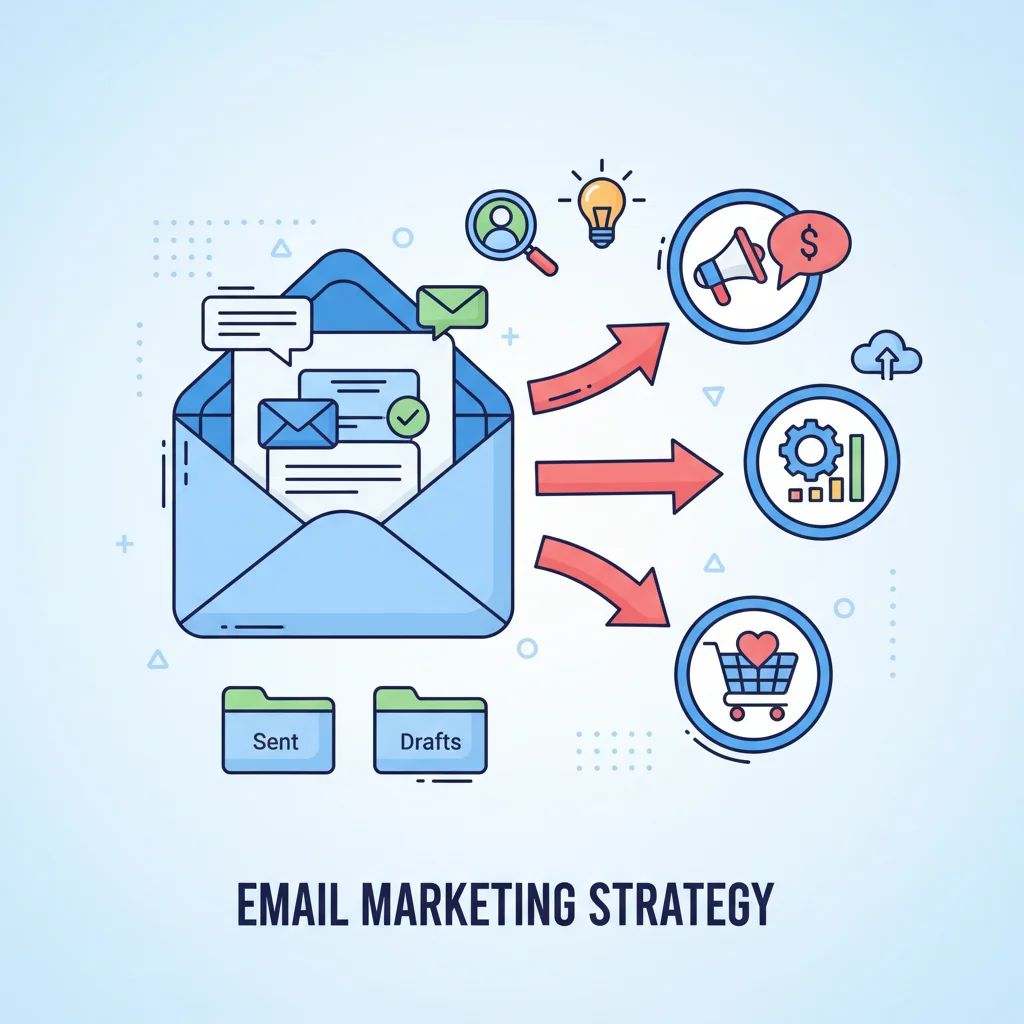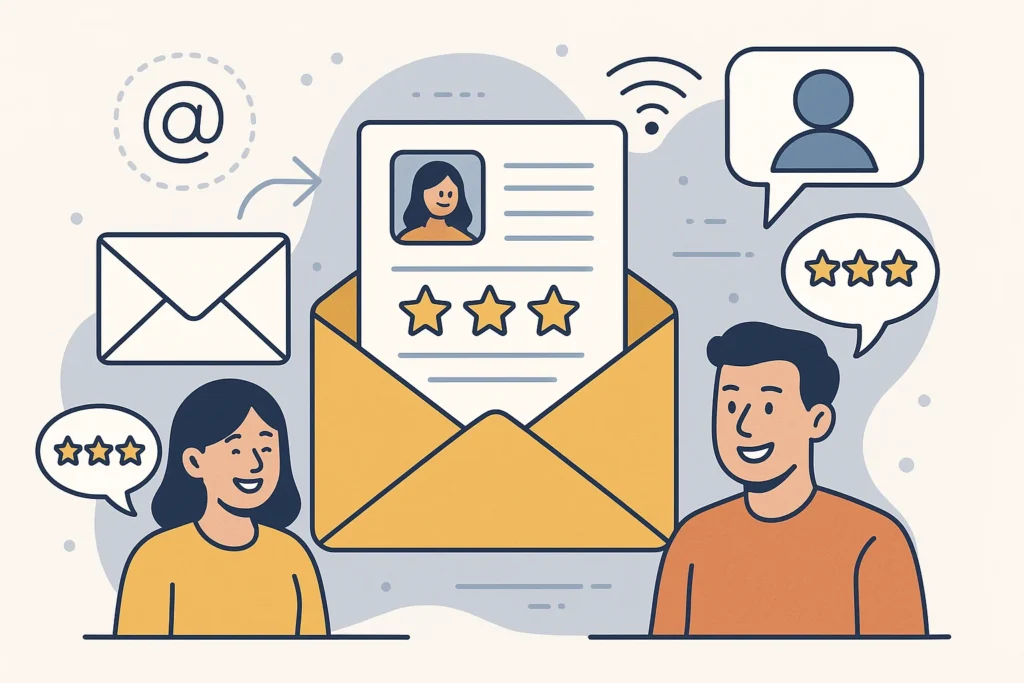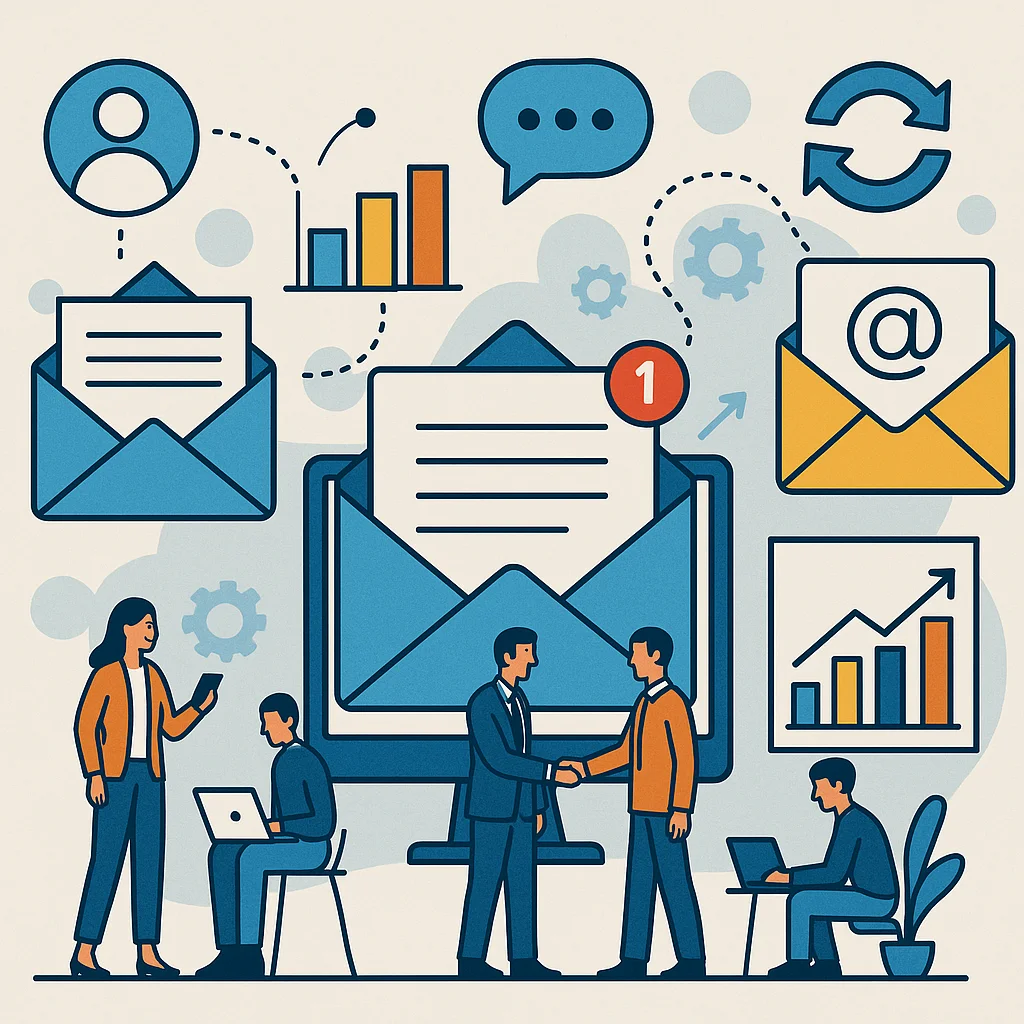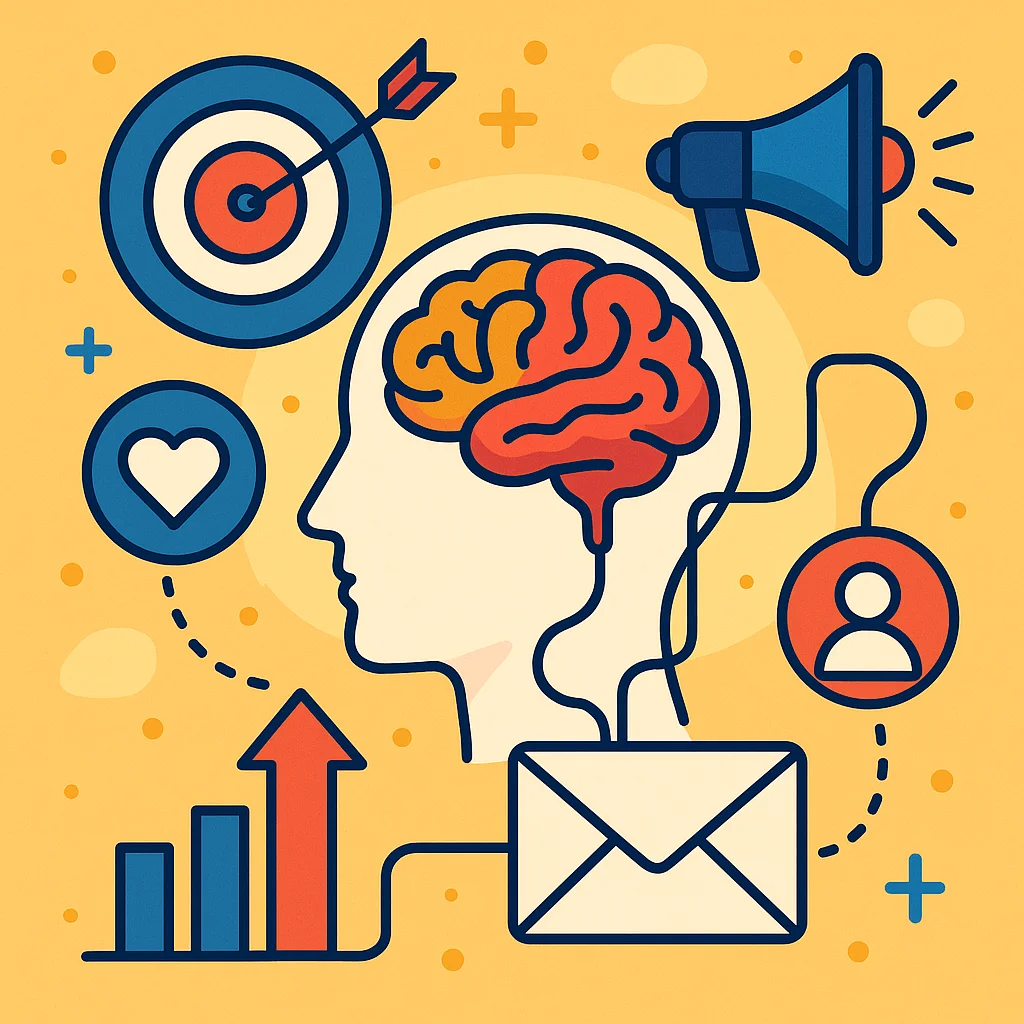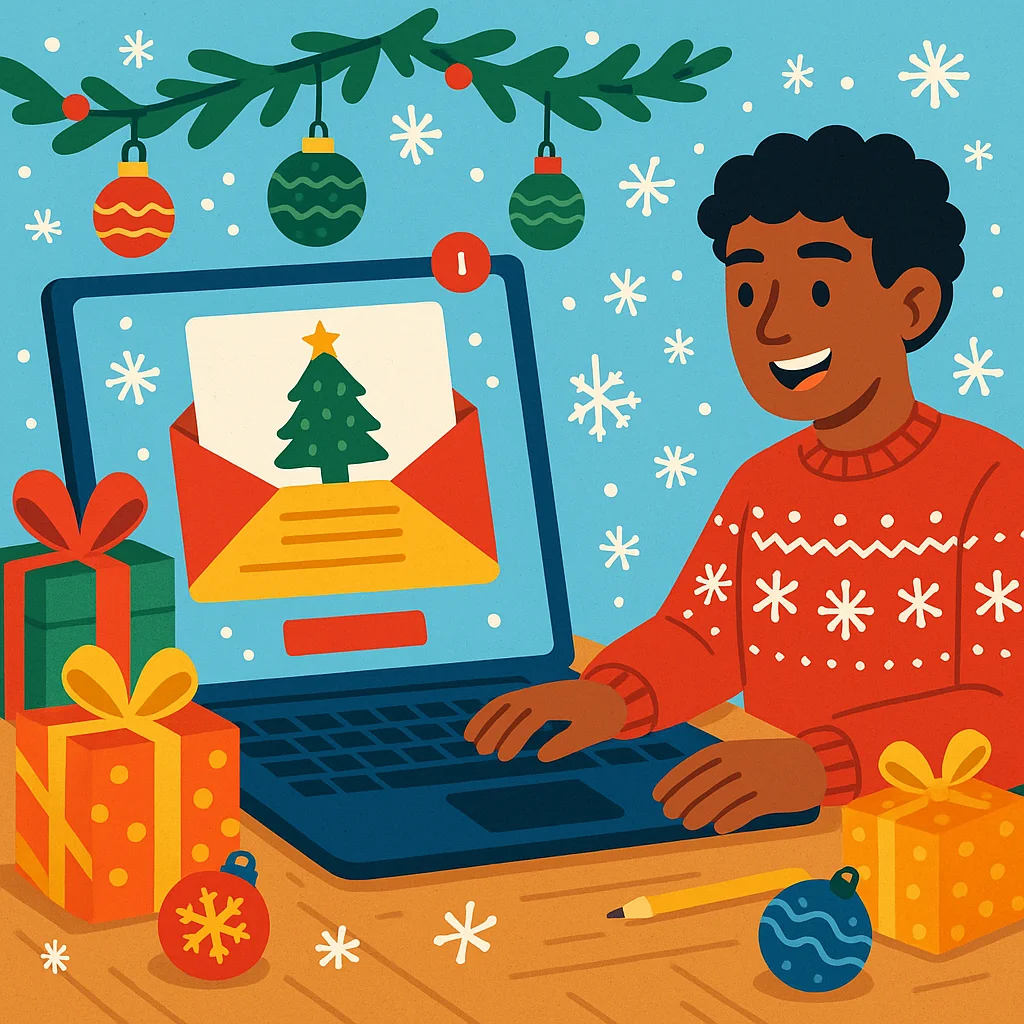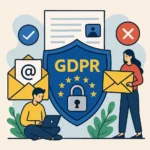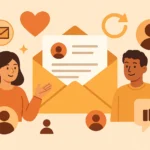Now Reading: Master Email Marketing for Customer Retention and Boost Loyalty
-
01
Master Email Marketing for Customer Retention and Boost Loyalty
Master Email Marketing for Customer Retention and Boost Loyalty
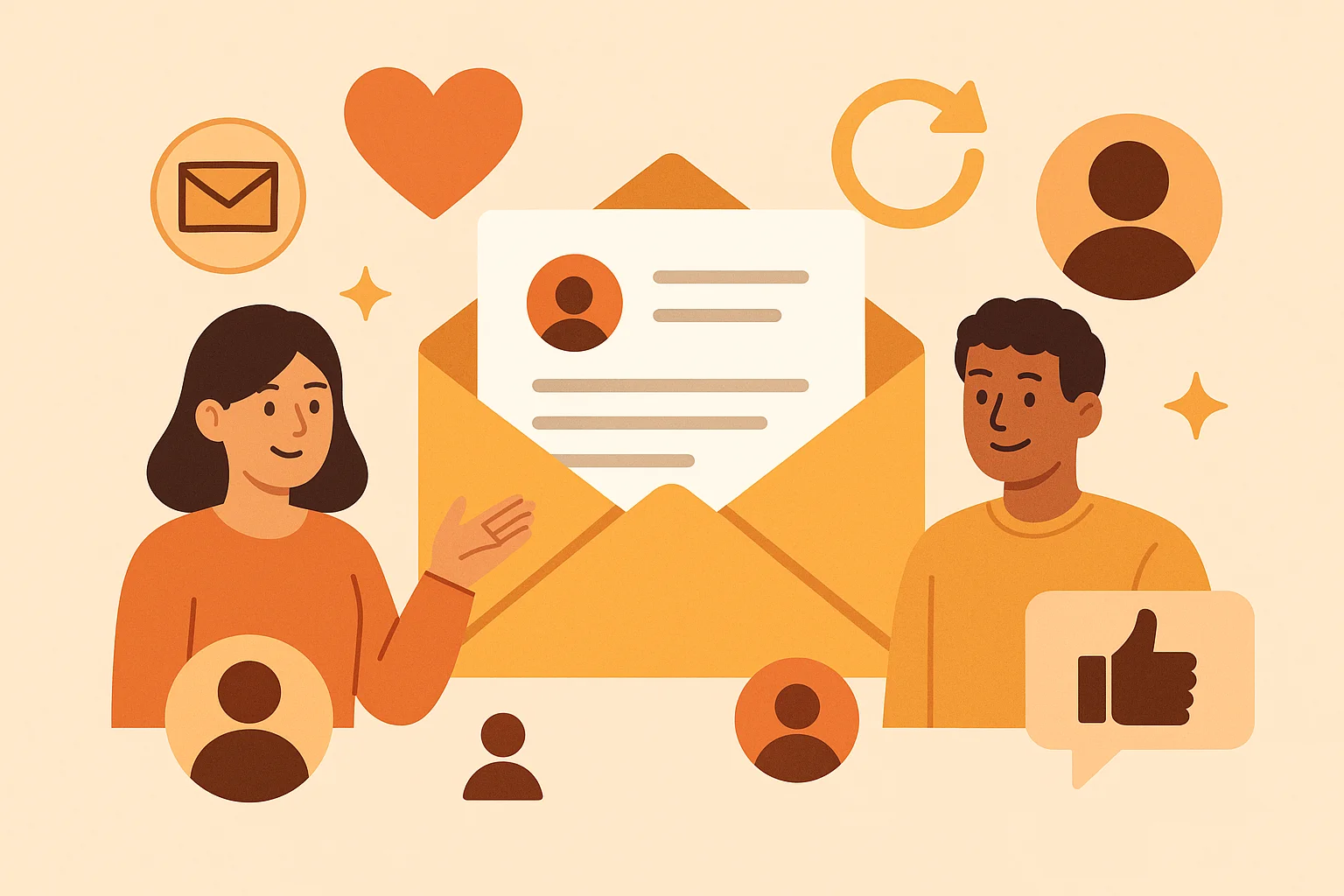
Let’s face it – acquiring new customers costs 5-25 times more than retaining existing ones. Yet many businesses pour resources into flashy acquisition campaigns while neglecting the gold mine of current customers. The problem? Without a solid email marketing for customer retention strategy, you’re essentially filling a leaky bucket. Your hard-won customers slip away silently, taking their lifetime value with them. But what if you could plug those leaks and transform one-time buyers into loyal advocates? That’s exactly what we’re diving into today.
Key Takeaways
How to use email marketing for customer retention:
- Segment your audience based on behavior, preferences, and purchase history to deliver highly relevant content
- Personalize your emails with customer names, product recommendations, and tailored offers to increase engagement
- Create automated sequences including welcome emails, post-purchase follow-ups, and win-back campaigns
- Craft compelling subject lines using words like “exclusive,” “thank you,” and personalized elements to boost open rates
- Provide genuine value through educational content, special offers, and loyalty rewards rather than constant selling
The Power Of Segmentation In Retention Emails
Let’s get real – blasting the same generic email to your entire list is about as effective as shouting into the void. If you want email marketing for customer retention to actually work, segmentation isn’t optional – it’s essential.
I’ve found that dividing your audience into meaningful groups allows you to send messages that feel like they were written specifically for each recipient. And guess what? Segmented campaigns can drive up to 760% increase in revenue. Not too shabby!
Behavioral segmentation
This is where the magic happens. Group customers based on their actions (or inactions):
- Purchase history: What have they bought? How often? How recently?
- Engagement level: Are they opening your emails? Clicking through?
- Cart abandoners: They were this close to buying – what happened?
For example, if someone frequently purchases skincare products, sending them emails about your latest skincare line makes way more sense than promoting unrelated items. It shows you’re paying attention.
Demographic segmentation
Sometimes the basics matter too:
- Age
- Location
- Gender (when relevant)
- Income level
A retail client of mine saw a 43% increase in click-through rates simply by segmenting their promotional emails by location and sending weather-appropriate product recommendations. Someone in Miami doesn’t need snow boots in May!
Lifecycle stage segmentation
Not all customers are at the same point in their journey with your brand:
- New subscribers: Need a warm welcome and introduction
- First-time buyers: Require reassurance and onboarding
- Loyal customers: Deserve recognition and exclusive perks
- At-risk customers: Need re-engagement before they’re gone for good
Each stage requires a different approach. Your loyal customers might appreciate early access to new products, while your at-risk segment might need a special offer to bring them back into the fold.
Useful Articles:
Personalization: The Heart Of Retention Emails
If segmentation is the brain of your email marketing for customer retention, personalization is definitely the heart. It’s what makes customers feel seen, valued, and understood.
And no, I’m not just talking about slapping their first name in the subject line (though that’s a start). True personalization goes much deeper.
Beyond the name game
While addressing someone by name is nice, sophisticated personalization includes:
- Product recommendations based on browsing or purchase history
- Content tailored to their interests and past engagement
- Offers aligned with their buying patterns
- Timing emails based on their typical engagement hours
One of my e-commerce clients implemented AI-driven product recommendations in their post-purchase emails and saw a 28% increase in repeat purchases within 60 days. The technology recognized patterns in customer behavior that weren’t immediately obvious to us humans.
Personalized subject lines that actually work
Your subject line is your foot in the door – make it count! Some proven approaches:
- “Jane, we picked these just for you”
- “Based on your last purchase, you’ll love this…”
- “Your reorder reminder for [specific product]”
- “We miss you, Jane! Come back for 15% off”
The data backs this up – personalized subject lines can increase open rates by 26%. That’s a lot of extra eyeballs on your content!
The psychology behind personalization
There’s a reason personalization works so well – it taps into fundamental human psychology:
- It creates a sense of recognition (“They know who I am”)
- It builds relevance (“This matters to me”)
- It fosters reciprocity (“They’re paying attention to me, so I’ll pay attention to them”)
When done right, personalization makes customers feel like they’re having a one-on-one conversation with your brand, not just receiving another mass email. And that feeling is what keeps them coming back.
Automated Email Sequences That Drive Retention
Let’s be honest – you don’t have time to manually send perfectly timed emails to every customer. That’s where automation comes in, and it’s a game-changer for email marketing for customer retention.
Automated sequences deliver the right message at the right time without you having to push the button. Set ’em up once, and they work for you 24/7.
Welcome series: First impressions matter
The moment someone joins your list is when they’re most engaged. Capitalize on this with a killer welcome sequence:
Email 1: The warm welcome
- Thank them for subscribing
- Set expectations (what they’ll receive and how often)
- Deliver on your sign-up promise (discount, free guide, etc.)
Email 2: Brand introduction
- Share your story and values
- Highlight what makes you different
- Include social proof (testimonials, reviews)
Email 3: Product/service showcase
- Introduce your best offerings
- Include educational content about how to get the most value
- Soft call-to-action
A client in the fitness industry implemented this exact sequence and saw 32% of new subscribers make their first purchase within the first week – up from just 8% before.
Post-purchase sequence: Cement the relationship
After someone buys from you, the real relationship-building begins:
Email 1 (Immediate): Order confirmation
- Thank them for their purchase
- Provide order details and next steps
- Set delivery expectations
Email 2 (1-2 days later): Educational content
- Tips on how to use their purchase
- Common questions answered
- Complementary products (soft sell)
Email 3 (7 days later): Check-in
- Ask how they’re enjoying their purchase
- Invite feedback or questions
- Request a review (if appropriate)
Email 4 (14-30 days later): Replenishment reminder or cross-sell
- Remind them when they might need to reorder
- Suggest complementary products
- Offer a loyalty discount
This sequence has been particularly effective for consumable products, with one skincare brand seeing a 41% increase in second purchases after implementation.
Win-back campaigns: Rescue at-risk customers
When customers go quiet, a strategic win-back sequence can bring them back:
Email 1: The “We miss you” message
- Acknowledge their absence
- Express genuine desire to reconnect
- Offer an incentive to return
Email 2 (3-5 days later): Value reminder
- Highlight new products/features they’ve missed
- Share positive developments or testimonials
- Reinforce benefits of returning
Email 3 (7-10 days later): Last chance offer
- Create urgency with a time-limited offer
- Emphasize what they’ll miss by staying away
- Make a compelling final offer
A well-crafted win-back sequence can recover 5-15% of dormant customers. For a business with thousands of customers, that’s significant revenue recaptured.
Useful Articles:
Crafting Subject Lines That Get Opened
Even the most amazing email content is worthless if no one opens your message. Your subject line is the gatekeeper to engagement, making it critical to your email marketing for customer retention strategy.
I’ve tested hundreds of subject lines over the years, and certain patterns consistently outperform others.
Power words that boost open rates
Research shows these words can significantly impact open rates:
- Exclusive: Creates a sense of special access
- Thank you: Expresses gratitude and builds goodwill
- Free: Still one of the most powerful words in marketing
- New: Triggers curiosity about what’s changed or been added
- Limited time: Creates urgency to act now
- Just for you: Emphasizes personalization
- Save: Highlights tangible benefits
One of my retail clients increased their open rates by 37% simply by changing “May Newsletter” to “Exclusive May Offers Just for You.”
Subject line formulas that work
Rather than starting from scratch each time, try these proven formulas:
- Question formula: “Ready to [achieve desired outcome]?”
- How-to formula: “How to [solve problem] with [your solution]”
- Curiosity gap: “The surprising reason customers are [doing something]”
- Announcement: “Introducing: [new product/feature] for [benefit]”
- Social proof: “Join [number] customers who [achieved result]”
The question formula has been particularly effective for service-based businesses, with open rates averaging 10-15% higher than standard declarative subject lines.
Length matters (and shorter usually wins)
With more than 60% of emails now opened on mobile devices, brevity is key:
- Aim for 30-50 characters when possible
- Front-load the important words (many mobile devices cut off longer subject lines)
- Use pre-header text to expand on your subject line
I ran an A/B test with identical email content but different subject line lengths. The shorter version (42 characters) outperformed the longer version (67 characters) by a 23% higher open rate.
Avoid spam triggers
Nothing kills your retention efforts faster than landing in the spam folder. Avoid:
- ALL CAPS (looks like you’re shouting)
- Excessive punctuation (!!!)
- Spam-triggering words like “free money,” “guarantee,” or “no risk”
- Misleading subject lines that don’t match your content
One client was puzzled by their declining open rates until we discovered their use of “FREE” in all caps was triggering spam filters for about 30% of their sends.
Providing Value Beyond The Sale
Here’s the brutal truth: If your emails only ever ask for the sale, you’re training customers to ignore you. Effective email marketing for customer retention requires giving more than you take.
The most successful retention emails provide genuine value that makes subscribers glad they opened – whether they buy something or not.
Educational content that solves problems
Position yourself as a helpful resource, not just a vendor:
- How-to guides related to your products or industry
- Tips and tricks for getting more value from purchases
- Insider knowledge that makes customers feel “in the know”
- Answers to common questions before they even have to ask
A software client of mine sends a monthly “power user tip” email that consistently achieves open rates above 40% – more than double their promotional emails – because subscribers know they’ll learn something useful.
Exclusive offers and loyalty rewards
Make customers feel special with offers not available to the general public:
- Early access to new products
- Subscriber-only discounts
- Free shipping offers
- Loyalty point bonuses
- Birthday or anniversary gifts
The key is exclusivity – these offers should make customers feel like VIPs, not just recipients of the same deals anyone can get.
Community building and social proof
Foster connection between customers and your brand:
- Feature customer stories and testimonials
- Showcase user-generated content
- Invite feedback and actually use it
- Share behind-the-scenes glimpses of your business
- Celebrate milestones together
A fashion retailer I work with sends a monthly “Style Spotlight” featuring real customers wearing their products. These emails have a 52% higher engagement rate than their standard promotional content because they make customers feel like part of a community.
Surprise and delight moments
Sometimes the unexpected makes the biggest impact:
- Spontaneous gifts or discounts (“Just because”)
- Recognition of customer milestones
- Personal notes from team members
- Fun, non-promotional content that showcases your brand personality
These moments of surprise create emotional connections that transcend transactional relationships, turning customers into genuine fans.
Useful Articles:
Types Of Retention Emails That Convert
Not all retention emails serve the same purpose. Let’s break down the specific types that should be in your email marketing for customer retention toolkit, along with when and how to use them.
Welcome emails: First impressions count
Welcome emails have an average open rate of 50% – making them 86% more effective than standard newsletters. They set the tone for your entire relationship.
Key elements of effective welcome emails:
- Warm, conversational tone that makes new subscribers feel valued
- Clear explanation of what to expect from future emails
- Immediate delivery of any promised sign-up incentives
- Brief introduction to your brand story and values
- Clear next steps (what should they do now?)
A travel company I worked with revamped their welcome email to include a personal note from the founder along with their top 3 travel guides. This simple change increased their new subscriber to customer conversion rate by 23%.
Thank you emails: Appreciation builds loyalty
Expressing gratitude goes a long way in building emotional connections:
When to send thank you emails:
- After purchases
- When customers reach milestones (1 year with you, 10th purchase, etc.)
- Following feedback or survey completion
- After referrals
- Just because (occasional appreciation without a specific trigger)
The key is sincerity – a generic “thanks for your purchase” feels transactional, while a thoughtful message that acknowledges their specific contribution to your business feels personal.
Replenishment reminders: Timely convenience
For consumable products, replenishment reminders are retention gold:
- Calculate average usage time and send reminders just before customers run out
- Include one-click reordering to make the process effortless
- Add value with complementary product suggestions
- Offer subscription options for additional convenience and savings
A beauty brand I consulted with implemented replenishment reminders for their skincare products and saw a 34% increase in repeat purchase rate within the first quarter.
Re-engagement campaigns: Winning back the disengaged
When customers go dormant, strategic re-engagement can bring them back:
Elements of effective re-engagement:
- Acknowledge their absence without guilt-tripping
- Highlight what’s new since they’ve been gone
- Provide a compelling reason to return (special offer, new feature, etc.)
- Create a sense of belonging (“we miss you”)
- Include a clear, strong call-to-action
Even a modest 5-10% recovery rate from re-engagement campaigns represents significant revenue that would otherwise be lost.
Loyalty program updates: Rewarding ongoing relationships
For businesses with formal loyalty programs, regular updates keep members engaged:
- Point balance notifications
- “You’re close to your next reward” reminders
- Tier status updates
- Special member-only offers
- Early access opportunities
A restaurant client saw a 28% increase in loyalty program engagement after implementing monthly status update emails that clearly showed members how close they were to their next reward.
Design Elements That Enhance Retention Emails
Let’s talk about the visual stuff. The design of your emails plays a huge role in how effective they are for customer retention. Even the best copy can fall flat with poor design.
Mobile optimization is non-negotiable
Over 60% of email opens now happen on mobile devices, so if your emails look terrible on phones, you’re shooting yourself in the foot.
Key mobile design considerations:
- Single-column layouts that adapt to small screens
- Large, touch-friendly buttons (minimum 44×44 pixels)
- Readable font sizes (minimum 14px for body text)
- Compressed images that load quickly on mobile data
- Short paragraphs that don’t create text walls on small screens
I tested identical email content with mobile-optimized vs. desktop-only designs. The mobile-friendly version had 27% higher click-through rates across all devices – even on desktop!
Visual hierarchy that guides attention
Strategic design helps readers quickly find what matters:
- Use size, color, and spacing to indicate importance
- Place your most important content and CTAs “above the fold”
- Create visual breaks between sections
- Use white space strategically to prevent overwhelm
- Limit the number of images and CTAs to avoid confusion
Think of your email design as creating a visual pathway that leads the reader exactly where you want them to go.
Brand consistency builds recognition
Consistent visual elements create a sense of familiarity that builds trust:
- Use the same color palette across all emails
- Maintain consistent typography
- Include your logo in the same position
- Develop a recognizable email template structure
- Keep your voice and tone consistent
A fitness brand I worked with created a standardized template system with consistent header styles, button designs, and footer information. After implementation, they saw a 17% increase in click-through rates as subscribers became familiar with their email structure.
Accessibility considerations
Making your emails accessible isn’t just ethical – it’s good business:
- Use sufficient color contrast for text readability
- Include alt text for all images
- Create a logical reading order for screen readers
- Avoid using color alone to convey meaning
- Provide plain-text alternatives
One client discovered that making their emails more accessible actually improved engagement across their entire audience – proving that good accessibility benefits everyone.
Timing And Frequency: Finding The Sweet Spot
When it comes to email marketing for customer retention, timing isn’t everything – but it’s pretty darn important. Send too frequently, and you risk annoying subscribers. Send too rarely, and they forget you exist.
Industry benchmarks as starting points
Different industries have different norms for email frequency:
- Retail/E-commerce: 2-4 emails per week
- SaaS/Software: 1-2 emails per week
- Professional Services: 1-2 emails per month
- Nonprofits: 2-4 emails per month
These are just starting points – your specific audience may have different preferences.
Testing to find your optimal frequency
The only way to truly know what works for your audience is to test:
- Segment your list into groups
- Send at different frequencies to each group
- Monitor key metrics (opens, clicks, unsubscribes)
- Adjust based on results
A B2B client discovered that reducing their email frequency from weekly to bi-weekly actually increased their overall engagement and conversion rates. Their audience preferred fewer, more valuable communications.
Best days and times to send retention emails
While individual results vary, research suggests:
- Best days: Tuesday, Wednesday, Thursday
- Best times: 10am, 1pm, 4pm
- Worst days: Monday (too busy), Friday (weekend mindset)
- Worst times: Early morning, late evening
Again, testing with your specific audience is crucial. A food delivery service I worked with found their best engagement was actually on Sunday evenings when people were planning their week ahead.
Respecting subscriber preferences
The most sophisticated approach is letting subscribers choose:
- Offer preference centers where subscribers select frequency
- Provide content-based options (“daily tips” vs. “weekly roundup”)
- Always honor unsubscribe requests promptly
- Consider “snooze” options instead of permanent unsubscribes
Giving subscribers control over their experience demonstrates respect and can significantly reduce unsubscribe rates.
Email marketing for customer retention isn’t a set-it-and-forget-it strategy. It requires ongoing attention, testing, and refinement. But the effort pays off tremendously. By implementing these strategies, you’ll transform one-time buyers into loyal fans who not only purchase repeatedly but become advocates for your brand. And in today’s competitive landscape, those loyal customers are pure gold. So go ahead – segment, personalize, automate, and provide value. Your bottom line will thank you.


